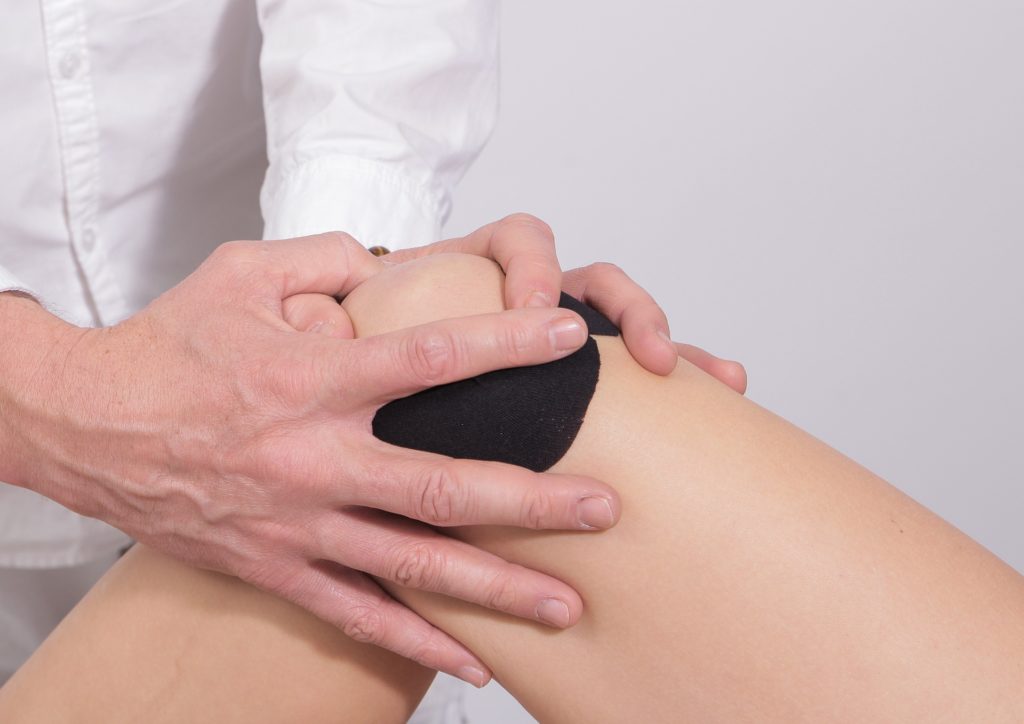
The knee, which is the part of the body that includes the periphery between the thigh and the shin, plays an essential role in enabling movements necessary for physical activity, such as rotation, flexion, and extension. When an abnormality occurs in the knee joint and damage to the cartilage occurs, the possibility of various related diseases increases. Knee arthritis is one of the diseases related to the knee, and it refers to a disease that accompanies the gradual loss of cartilage in the knee joint and secondary changes and symptoms caused by it. It is located at the end of the bone and is a type of degenerative arthritis in which the cartilage of the joint that absorbs shock gradually wears away, and it is known that the incidence rate is high in middle-aged and elderly people.
The main causes influencing the development of knee arthritis can be classified into systemic factors and local factors. Systemic factors include age and obesity, gender, hormonal changes, bone density, nutritional status, and genetic influence. And local factors can be said to include occupations that use a lot of joints, developmental abnormalities, and sports activities. Since knee arthritis belongs to the category of degenerative diseases that occur with aging, it is known as a representative musculoskeletal disease with a high incidence in the elderly. However, it is known that the knee joint is severely impacted by various factors such as trauma, occupational characteristics, and excessive sports activity, and early cartilage damage occurs, which can occur even in young age groups. Now, let’s learn about the main symptoms that appear when knee arthritis occurs, as well as various information related to treatment and prevention.
The main symptoms of knee arthritis
The main symptoms of osteoarthritis of the knee are aching and aching pain. It is mild in the beginning and gradually worsens over the years. In addition, swelling around the knee joint appears, and at the same time, you will feel discomfort in bending and straightening the knee joint, and sitting and standing. Also, stiffness in the joints can occur. Stiffness is more severe when you wake up in the morning, and it is also greatly affected by the cold weather.
If the treatment of knee arthritis is delayed, pain and other symptoms may limit normal activities and movements, causing great discomfort and difficulties in life. In particular, as the intensity of pain increases when using the knee, the knee may not straighten in a straight line or it may become difficult to walk for a long time. In addition, if the symptoms progress to a more severe form, it may lead to deformity in which the leg is bent. Therefore, when symptoms do occur, it is important to receive appropriate diagnosis and treatment at an early stage without delaying or neglecting treatment.
Knee arthritis treatment and prevention
1. Multiple tests and appropriate treatment
In order to diagnose knee osteoarthritis, a procedure is performed to check the pain and range of motion of the knee. In addition, an X-ray examination is performed to observe the decrease in joint space, and an MRI examination can be performed to check the condition more precisely. And depending on the diagnosis result, conservative treatment and surgical treatment are proceeded. Conservative treatment involves various treatment methods such as lifestyle modification, drug treatment such as nonsteroidal anti-inflammatory drugs and steroids, and the use of orthosis. In addition, to improve the condition of the joint fluid, treatment is performed by injecting a lubricant containing hyaluronic acid. And if there is no response with only these conservative treatments, surgical treatment such as artificial joint, proximal tibial osteotomy, and artificial joint replacement may be performed.
2. Steady exercise
In order to prevent knee arthritis and improve symptoms, it is very important to perform regular exercise. It is recommended to perform these exercises regularly because they prevent obesity, which accelerates cartilage damage, and at the same time, help strengthen the muscles that support the knee joint. When you regularly engage in light-weight walking, swimming, biking, and light-intensity squats, it strengthens your muscles and helps to maintain the range of motion in your joints. However, it is recommended to avoid extreme sports activities, climbing on steep slopes, running, etc., as they can put strain on the knee joint.
3. The habit of keeping the knee area warm all the time
When the knee joint is exposed to cold temperatures, it can cause stiffness of the muscles around the knee. It can also act as a cause of abnormalities in joint fluid, which acts as a lubricant for smooth joint movement. Therefore, it is important to always keep your knees warm and pay more attention to keeping warm.
In addition, it is recommended to avoid postures that may cause damage to the joints, such as kneeling or squatting, as much as possible. In addition, it is said that it is a very important management habit to consistently consume calcium-rich anchovies, dairy products, and legumes, which are directly involved in the formation and maintenance of bones. However, excessive drinking and smoking not only promotes the activity of inflammatory cells, but also accelerates the loss of cartilage, so it is necessary to correct the habits to reduce and limit.









